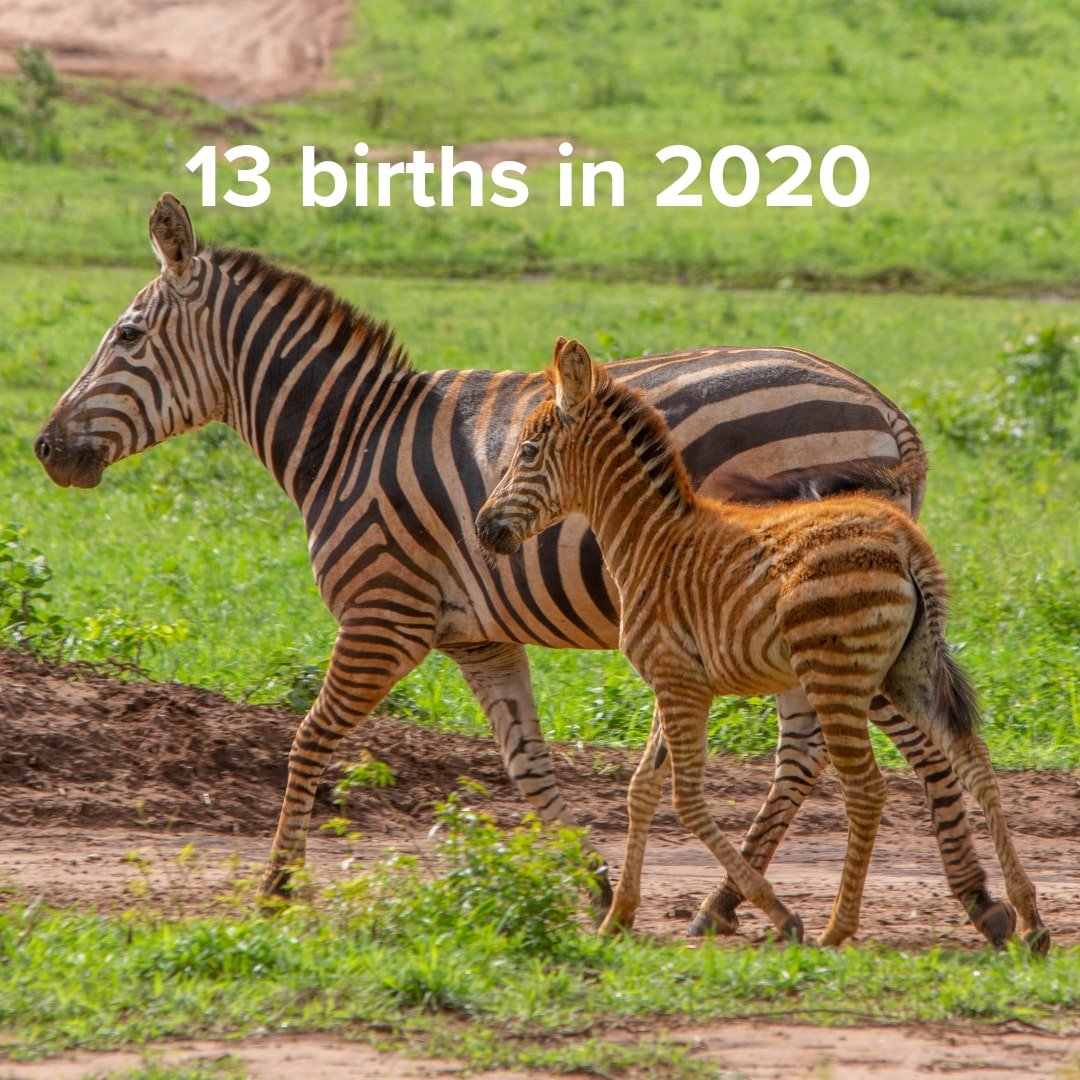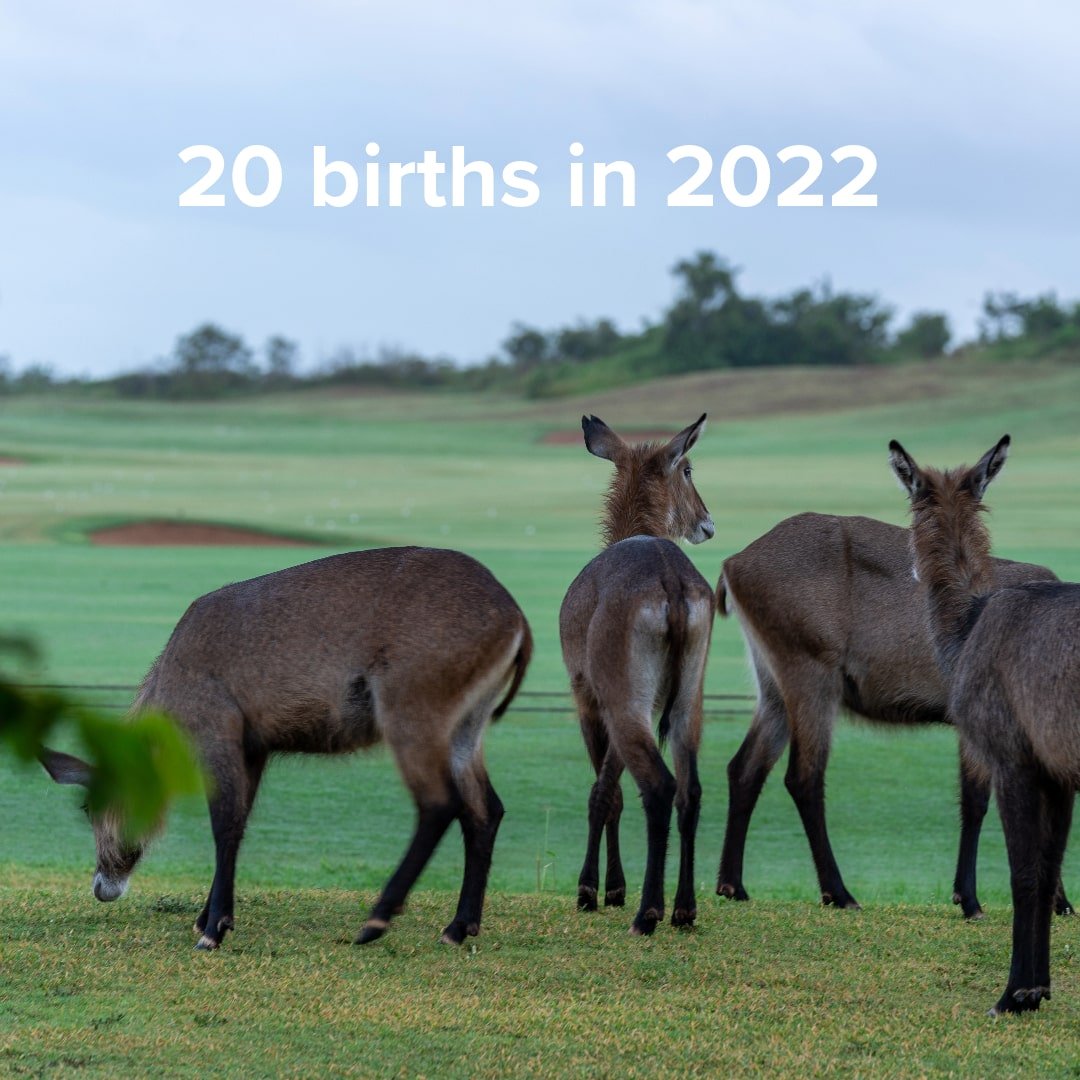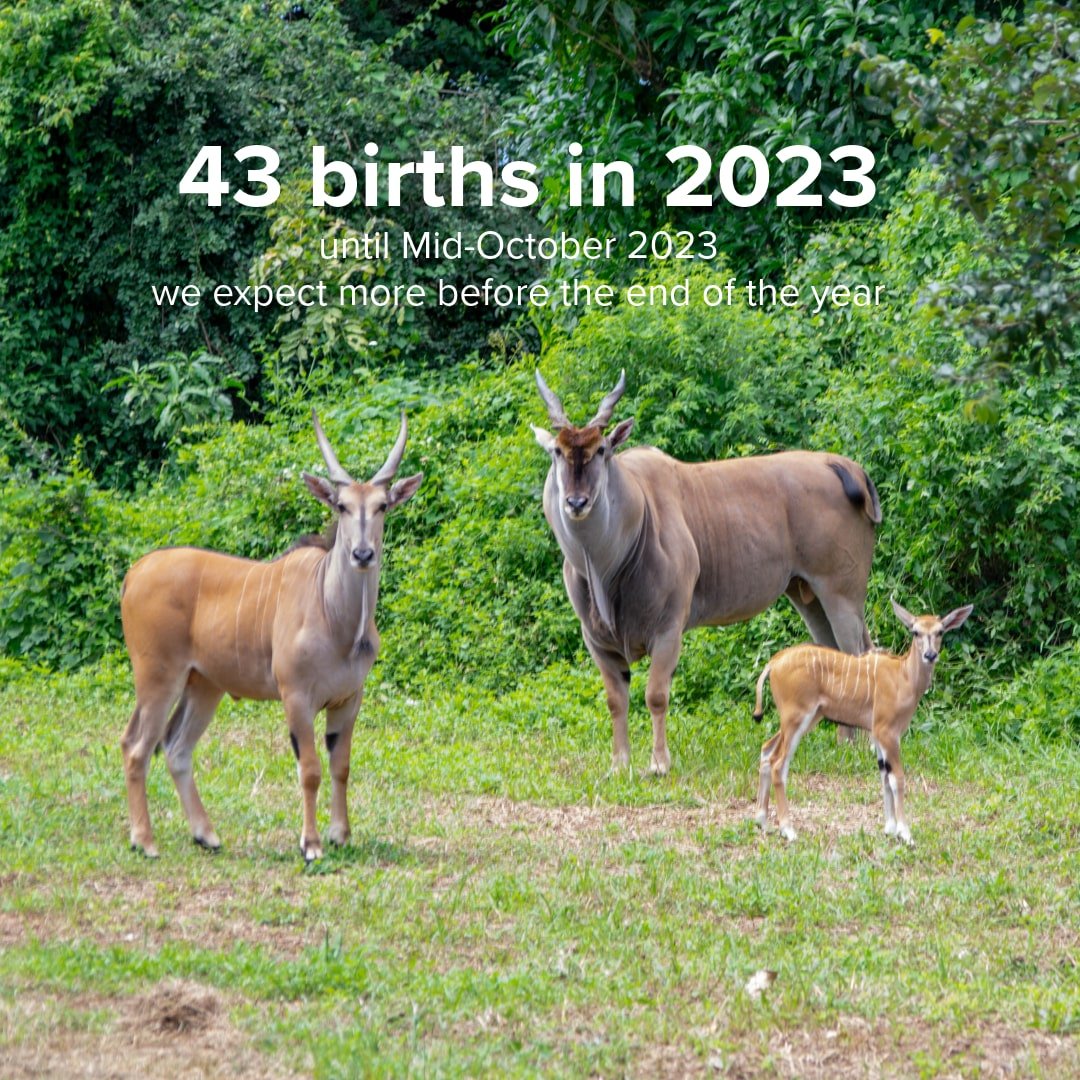Bringing wildlife home to Vipingo Ridge: 3 years on
Vipingo Ridge has been on a journey from a sisal estate to coastal habitat for over 17 years. Many parts of the wider development are now indigenous forest and grassland, joined by wildlife corridors. With the iconic PGA Baobab course golf greens, fairways and of course our stunning gardens - our landscape is truly unique.
Three years ago this month marks the start of the ‘return home’ of a number of native species. Our Wildlife team joined us in October 2020 and the work began with our partners to create a place we are very proud of.
We look back on the journey of the ‘winning space for wildlife’ programme and the share the latest update on the progress of our breeding initiative.
From habitat restoration to registered Wildlife Sanctuary: a timeline
Expand the timeline to see the steps to create our Kenya coastal wildlife sanctuary.
-
The scorched earth meant that only invasive exotic species had survived and there was virtually no tree cover at all. Tree-felling, charcoal-burning, and poaching used to take place across the abandoned sisal estate which was a magnet for men with dogs to hunt whatever they could find, anything from Bushbuck to Guinea Fowl.
The introduction of the walled perimeter and security team was a big step in making the development safe for the smaller species, who often are bush meat for the local community. This investment benefits the human residents and has paved the way for Vipingo Ridge as we know it today.
-
Our Founders began the work to transform our Kilifi landscape. An indigenous tree nursery was first established by collecting the seeds from trees in the wider region and by 2009, approximately 35,000 seedlings had been strategically planted on bare land and interspersed among the existing scrubland.
Due to its incredible success, this planting program continues to this day and will do so for many years to come. Some of the original seedlings are now fully-grown trees standing at over 60 feet tall and an impressive skyline of natural greenery can be seen in every direction.
-
Wildlife conservation in Kenya has until recently been reliant on government-managed protected areas. This system however changed and opportunities for the engagement of private landowners and communities in wildlife conservation were created, following promulgation of the National Constitution in August 2010 and ratification of the Wildlife Conservation and Management Act (WCMA), 2013.
These provide for a decentralized system of governance for the management of wildlife resources in non-protected areas, and the establishment of wildlife conservancies or sanctuaries by individuals or community groups respectively. This conservation model is a critical complement to the national parks, reserves, and sanctuaries and has the potential to create bigger and more connected spaces for wildlife.
-
The Founders of Vipingo Ridge had long held an idea of reintroducing native species. In 2018 the application was made to Kenya Wildlife Services (KWS) and in early 2019 the KWS commissioned an Ecological/Habitat Suitability Assessment to determine the feasibility of the request, identify areas of importance to wildlife, status of surface water and recommend wildlife species best suitable for the habitat.
The assessment established that the estate has adequate vegetation cover to support a variety of wildlife species and grazers, browsers and mixed feeders such as giraffes, zebras, impalas, bush bucks and oryx among other like antelopes were highly recommended for the Vipingo Ridge area.
-
Ecological/Habitat Suitability Assessment and report recommendations were deliberated by the KWS Species Introduction and Re-introduction Committee on 2nd July 2020 and the establishment of the Vipingo Ridge Wildlife Sanctuary (VRWS) proposal was approved.
The approval was subject to an Environmental and Social Impact Assessment (ESIA) in compliance with the Environmental Management and Coordination Act (1999) and as revised in 2015 in accordance with the Environmental Impact Assessment (EIA) and audit Regulations of 2003.
The methodology employed during the assessment included sample plots of uniform sizes for vegetation assessments, opportunistic observations and photography, semi- structured questionnaires to identified stakeholders, water quality status based on the irrigation standards in Kenya and social assessment using questionnaires and group interviews.
Following the successful outcomes of the ESIA and a license, Vipingo Ridge applied to KWS to become a sanctuary.
The registration was approved and the sanctuary was officially registered as Vipingo Ridge Wildlife Sanctuary on 29th September 2020.
Returning wildlife home to Vipingo Ridge in 2020
Following the official licensing in 2020 work immediately began to build capacity. This was in two main focus areas, one was the team and manpower requirements and the second the physical infrastructure.
The Wildlife Team
The management of the species to be introduced was in a semi-free range way, so the project required that the personnel have requisite training and experience on animal husbandry as well as monitoring and security.
A qualified and experienced Wildlife Consultant, Project Manager, Administrator, Rangers and KWS licensed Vet were employed on fulltime and contract basis to be able to manage and run the sanctuary effectively and efficiently.
Animal holding areas or Bomas
Bomas are a critical part of the animal relocation process. These spaces and structures aim to help the team assess the animals before release to the Sanctuary, allowing for assessment of any injuries or diseases.
In 2020 we immediately constructed a 6-unit boma on the identified 10 acres land between the Links Park and the Sundowner. Liaising with KWS and Lafarge (our first phase partner for animals) for the designs of the boma to ensure effectiveness and safety of animals during the holding period. The main specifications and requirements for the boma were:
1. The Boma area to mimic the natural habitat such as having natural tree shade.
2. A door at main boma entrance with a shaded roof to protect the animals from direct sunlight.
3. 30metres of rubber conveyer belts on one side of the boma halfway from bottom going up to prevent injuries when animals walk in through the crush
4. Walls covered with hessian cloth to block the animals’ vision and minimize their efforts of wanting to go out
5. Drainage of boma area was well sloped for safety of animals in case of flooding in heavy rainy seasons.
6. Water and feeding troughs were placed in the boma and beddings spread on the floor with partitioning done on the boma for easy servicing/cleaning of the bomas.
Translocating the Animals
The most difficult part of the process is moving the animals. Dedicated teams from the animal donor facility, Kenya Wildlife Services and Vipingo Ridge worked together closely, following strict wildlife relocation protocols.
There are three key steps to the process: 1. Capture, 2. Loading and transportation, 3. Offloading and release.
Capture
Both physical and chemical techniques were used to capture depending on the species behavior and the effect the method had on them. The Impalas and grants’ gazelles were captured using nets which is effective for capturing such flighty and highly alert animals while the other animals were chemically immobilized.
Blood, tissue, faecal and ectoparasite samples were collected for further analysis of the health status of the animals to manage any illnesses or infections effectively as they settle in.
Loading & Transportation
The different species were loaded and translocated separately. For most species, females were loaded into mass crates and since it would be hectic to transport males individually, plastic pipes were fitted onto their horns to minimize injury during transportation. The immobilized animal vital parameters were recorded and degree of anesthesia monitored on a regular basis throughout the journey.
Offloading & Release
The animals were offloaded using a ramp and were walked into the Boma. Hay was placed in the boma for beddings and fresh grass cuttings, lucerne pellets, salt lick blocks and fresh water were provided for feeding and supplementation. The animals were held in the boma for 2 weeks to allow for acclimatization and habituation and gradually released to the semi-free-range area.
Phased species introductions
One of the goals of our project is to enhance genetic diversity in populations. We do this by working with KWS and a number of partners to source animals from diverse coastal species populations, integrating new bloodlines.
Expand the options below to see the different species counts introduced in each phase.
-
Species- Source - Numbers
Impala - Dari-Karen - 1
Oryx -Lafarge Ecosystems - 5
Waterbuck - Lafarge Ecosystems - 4
Eland - Lafarge Ecosystems - 3
Total 13 animals
-
Species - Source - Animals
Eland - Tsavo East National Park - 1
Impala - Marula Farm, Naivasha - 11
Grants’ Gazelles - Galana Kulalu Ranch - 4
Waterbuck- Lafarge Ecosystems -1
Zebras - Kinango - 13
Total 30 animals relocated
There were mortalities in the phased moves. These can be attributed to challenges in acclimatization and normal stress during the translocation process. Extensive progress review meetings took place to plan and review at each move to make an improvements where possible.
Balancing this a new waterbuck birth was also recorded on 27th January 2021 which brought the species’ count to 6 and total count to 44.
2021 was the year of Giraffes
We’ll tell the detailed tale of our introduction of giraffes in a future blog, but in 2021 we expanded our diversity of species with three rescue giraffes from partners Reteti and Ishaqbini.
2022 was our biggest move yet
Phase 3 – May 2022 Animal Introductions – 66 animals
Our biggest introduction to date, the Ziwani translocation operation involved careful planning, approval processes, and a highly coordinated effort.
Animals were captured using an innovative funnel system that minimized stress and ensured their safety during transportation.
Species - Animal counts
Wildebeest - 11
Zebra - 10
Impalas - 31
Grants’ Gazelles - 9
Hartebeest - 5
The majority of translocated animals adapted well to their new habitat, quickly integrating into existing herds. These additions spread out across the sanctuary and successfully intermingled. This integration has since enhanced genetic diversity and contributed to the overall ecological health of the sanctuary.
3 years on: 76 births at Vipingo Ridge
So after exactly 36 months since the first introduction we have had a very impressive result. A total of 76 births have been recorded within the 3 years:
As well as the positive signals from animals breeding our success rate within the first year of calving is approximately 95%, whereas in the wild, it is only 50%.
Not all species are breeding at the same rates and the work is ongoing to study those that have not been as successful to understand behaviours and the individual animals.
This birth rate (and death rate – despite the lack of predators, human or otherwise, there is a natural lifecycle impact) takes our current animal count of the reintroduced species of Grant’s Gazelles, Giraffe, Hartebeast, Impala, Oryx, Waterbuck Wildebeast, Zebra to 181.
Reflecting on the success of the program
One of the most vital objectives of wildlife conservation at the Vipingo Ridge Wildlife Sanctuary is to enhance a species recovery program through the ‘win space for wildlife, breeding, and re-introduction into the wild” program. Some of the key strengths and achievements of this objective include:
1. An ideal safe sanctuary for vulnerable wildlife populations
2. The ability to maximize breeding in a semi-controlled environment.
3. A predator-proof sanctuary with high-end 24 hour-security to control poaching, fire, pests, diseases, and monitor the wildlife very closely on a 24/7 basis.
4. Improved breeding, reduced in-breeding, and generally improved genetic diversity.
5. Excellent carrying capacity.
6. Restocking sites identified.
On this final point, we have been working with our partners and have already identified ‘restocking’ sites. These are other KWS recommended sites that can receive animals from our successful breeding programme, as well as be a source for new animals for Vipingo Ridge.
This is important so that the bloodline diversity can always be improved in our sanctuary. This initial has years has demonstrated uncommon success, noted by our partners as an exciting opportunity for conservation in the whole Kenya coastal region.
Our thanks to our important partners, without whom these guests (the animals are not ‘owned’ by Vipingo Ridge) would not be enriching our Wildlife Sanctuary. Thank you to our homeowners and investors for supporting this initiative, and finally our Rangers and Wildlife team. These dedicated unsung heroes of Vipingo Ridge keep the guests, residents and animals safe and we could not be more proud of their achievements.
The future is very bright for this important part of what makes Vipingo Ridge so special and we’ll share more in future blogs.









